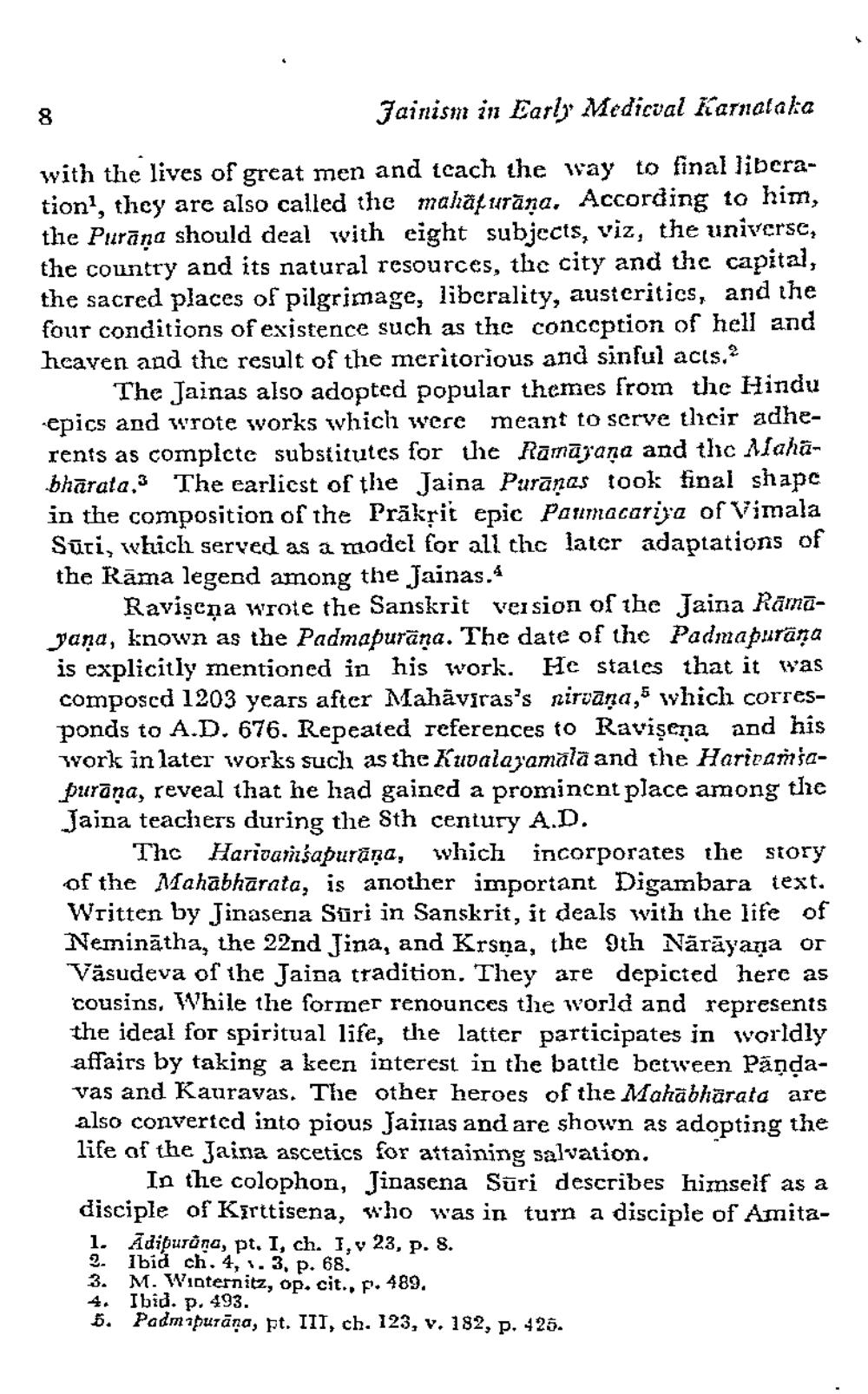________________
Jainism in Early Medicval farnataka
with the lives of great men and tcach the way to final liberation, they are also called the mahafurāna. According to him, the Purāņa should deal with eight subjects, viz, the universc, the country and its natural resources, the city and the capital, the sacred places of pilgrimage, libcrality, austeritics, and the four conditions of existence such as the conception of hell and heaven and the result of the meritorious and sinful acts.
The Jainas also adopted popular themes from the Hindu epics and wrote works which were meant to serve their adherents as complete substitutes for the Ramayana and the Alahäbhārata,3 The earliest of the Jaina Puranas took final shape in the composition of the Prākṣit epic Parmacarija of Vimala Sūti, which served as a model for all thc later adaptations of the Rāma legend among the Jainas.
Ravişcna wrote the Sanskrit version of ibc Jaina Ramayana, known as the Padmapuräna. The date of the Padmapurana is explicitly mentioned in his work. He stales that it was composed 1203 years after Mahāvíras's nirvana,s which corresponds to A.D. 676. Repeated references to Ravişena and his work in later works such as the Kualayamala and the Hariransapurāna, reveal that he had gained a prominent place among the Jaina teachers during the Sth century A.D.
Thc Harivansapurana, which incorporates the story of the Mahabharata, is another important Digambara text. Written by Jinasena Sūri in Sanskrit, it deals with the life of Neminātha, the 22nd Jina, and Krsna, the 9th Nārāyana or Väsudeva of the Jaina tradition. They are depicted here as cousins. While the former renounces the world and represents the ideal for spiritual life, the latter participates in worldly affairs by taking a keen interest in the battle between Pändavas and Kauravas. The other heroes of the Mahabharata are also converted into pious Jainas and are shown as adopting the life of the Jaina ascetics for attaining salvation.
In the colophon, Jinasena Sūri describes himself as a disciple of Karttisena, who was in turn a disciple of Amita1. Adipurona, pt. I, ch. 1, v 23, p. 8. 2. Ibiá ch.4, 1.3, p. 68.
M. Winternitz, op. cit., p. 489, 4. Ibid. p. 493. 5. Padmapurāna, pt. III, ch, 123, v. 182, p. 425.
3.




